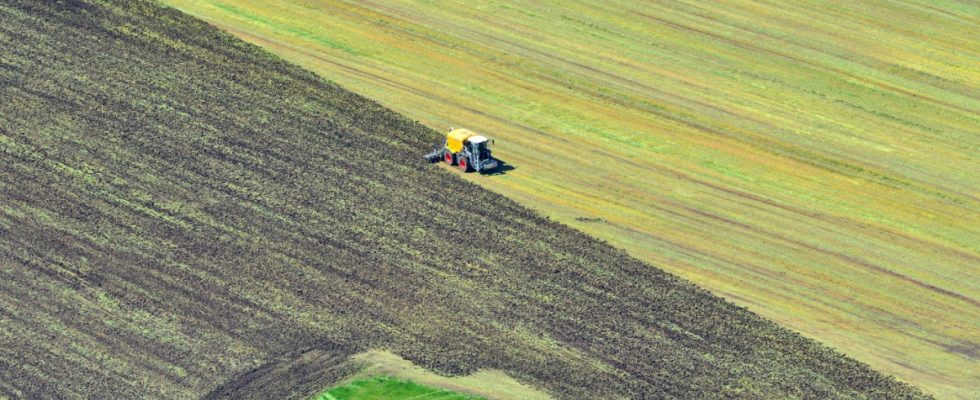Environment Minister Thorsten Glauber (Free Voters) has welcomed the strengthening of groundwater protection against pollution from agriculture by the Bavarian Administrative Court (VGH). “The judgments are a clear signal for basic and drinking water protection in Bavaria,” said Glauber. “This strengthens our stance and commits us: protecting groundwater is our top priority.” Agriculture Minister Michaela Kaniber (CSU) also made positive comments. “The verdicts confirm our approach to designating the red areas,” she said. “Our regulation is fundamentally legal.” Like Glauber, Kaniber announced that the measuring network for the contamination of groundwater by the pollutant nitrate, which results from excessive fertilization by farmers, will be expanded from around a thousand measuring points to 1,500 measuring points by the end of the year. This should enable the burdens to be recorded even more precisely than before.
The Farmers’ Association (BBV), on the other hand, reacted disappointedly to the judgments. BBV Vice President Stephan Köhler spoke of a “setback for the farmers affected”. As far as the progress of the legal dispute is concerned, he was very reserved. The new verdicts are the first in a total of 66 cases involving more than 1,000 farmers across Bavaria. Because of the fundamental importance of the legal dispute, the VGH has allowed an appeal before the Federal Administrative Court. It has not yet been decided whether the plaintiffs will take advantage of this opportunity. “At the same time, it remains to be seen how the other 62 pending cases will proceed,” said Köhler. With the judgments in the test cases, the VGH expects that the other plaintiffs will accept its case law and forego continuing their proceedings.
The dispute is about the designation of so-called red areas by the state government. Many farmers are therefore deeply angry with the state government, but also with the federal government and the EU, whose guidelines they ultimately follow. The red areas are associated with significant restrictions on agriculture. From an expert perspective, they are of course a huge step forward in protecting groundwater and thus drinking water in Bavaria. 85 percent of the drinking water in the Free State comes from groundwater. In many regions of Bavaria, however, the groundwater is contaminated with nitrates from manure and the many artificial fertilizers used in agriculture. In high concentrations, nitrate is a danger to flora and fauna. In addition, the groundwater is no longer suitable as drinking water. Because nitrate is dangerous for humans. It is suspected of causing cancer.
Environment Minister Thorsten Glauber welcomes the VGH rulings.
(Photo: Sven Hoppe/dpa)
Across Bavaria, the red areas currently cover 550,000 hectares. That’s 17 percent of the agricultural land in the Free State. The farmers who cultivate fields and pastures in the red areas have to comply with a whole series of requirements in order to protect the groundwater from further nitrate pollution. They are only allowed to apply 80 percent of the fertilizer that they have calculated as required by the crops on their fields. There are also longer blocking periods in the cold season, documentation requirements and more. From the farmers’ point of view, the requirements are an attack on their ownership of land and their freedom to work. On top of that, they fear financial losses if their fields no longer produce as high yields as before. And they doubt the suitability of the measuring points and generally consider the measuring point network to be too full of holes.
The VGH does not accept all the criticism. “According to the case law of the Federal Constitutional Court, water protection is a top-ranking public interest task,” said presiding judge Renate Köhler-Rott in her short oral reasoning for the judgment. “The associated negative impacts, such as reduced fertilizer use, are permissible restrictions that farmers must accept.” The farmers are therefore not entitled to any exemptions, exceptions or compensation regulations. The VGH also does not accept criticism of the measuring points and the measuring point network, especially since the state government is in the process of expanding the network.
The VGH only agreed with the plaintiffs when it came to one measuring point. It affects the so-called Vitusbachquelle near Thalmassing in the Regensburg district. This is, of all things, a so-called green measuring point. This means that the nitrate pollution there is well below the limit values above which a red area is designated. The VGH is convinced that the measuring point is in the area close to settlements. Therefore, it cannot be used to decide whether a red area needs to be set up there or not. The consequence of this: The red area in the region is invalid. A new measuring point must be set up so that a correct decision can be made as to whether a red area is necessary there and what shape it will have.
According to an initial assessment by experts, the consequences of this decision by the VGH are unlikely to please the plaintiff farmers. “The new red area in this area will certainly not be smaller than the previous one,” says an expert who knows the case very well but does not want to be named because of the explosiveness of the dispute. “In fact, it’s likely to get bigger.”

